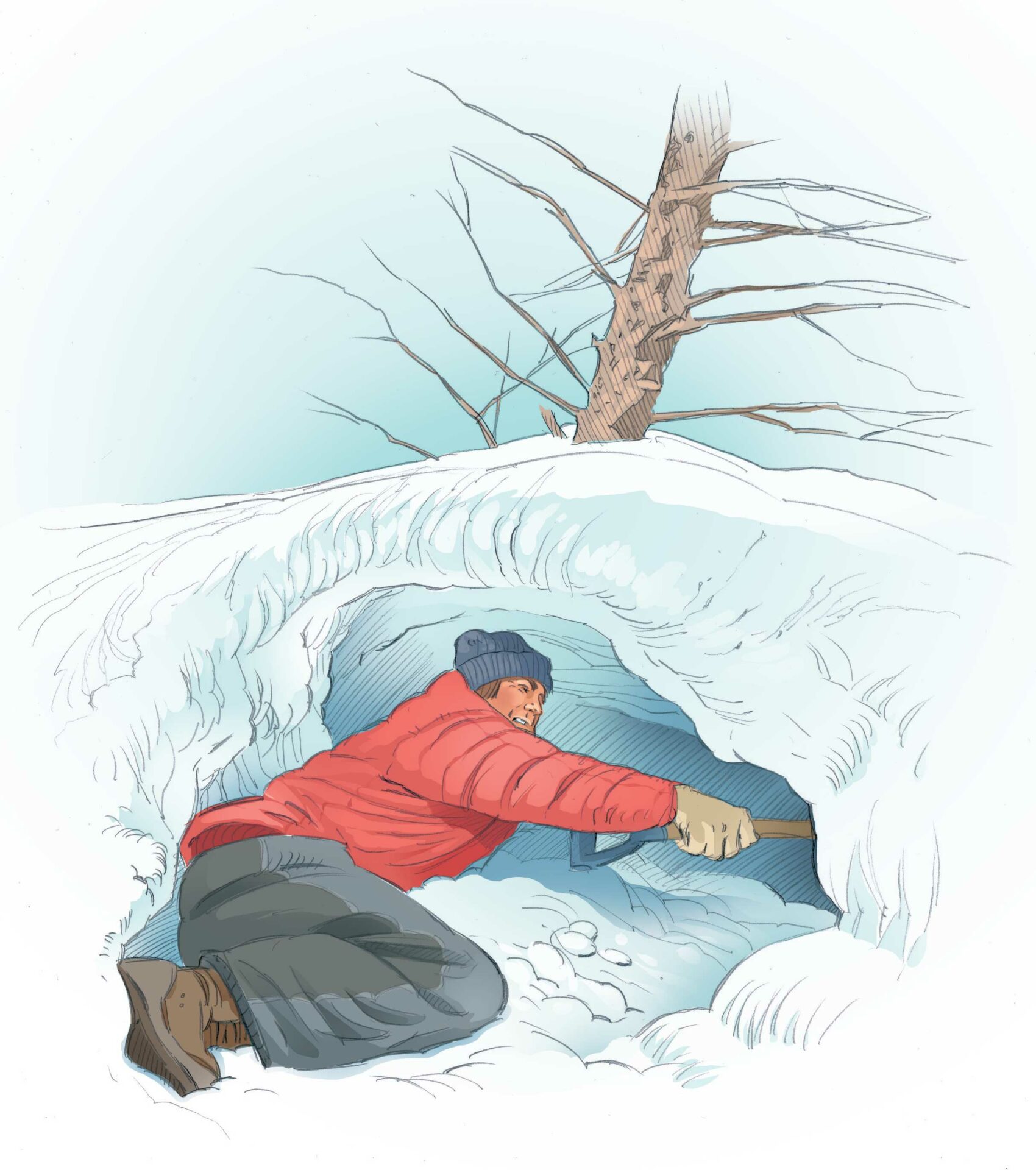Most survival books make the snow cave seem like an easy shelter to build. It’s not. At least, not the first time. Simply finding a spot that has a large enough deposit of snow, and at the right pitch and angle to allow you to dig a cave, is a task in itself. I’ve been in places in the middle of winter where there was snow all around me, and still could not find a suitable location for a snow cave. The other problem with snow caves is that they will get you wet with sweat from the effort you exert when you make them and from the snow that will accumulate all over your body during construction. Having said all that, snow caves can provide life-saving protection in winter conditions.
Advertisement

Related to the snow cave is the quinzhee. The difference between a quinzhee and a snow cave is that a snow cave requires that you find a snowdrift and dig into it. With a quinzhee, you take matters into your own hands and make the pile of snow yourself, into which you then dig out a cave. This can work, but I hesitate greatly to call it a survival shelter, because a) it exhausts you, b) you get soaking wet while making it, c) you have to be in a place where you can maneuver enough snow into a big pile, and d) you need a shovel (or at least a snowshoe) to dig with. If you do decide to make a quinzhee, make sure you dig your entry hole away from the wind. Another important consideration with the quinzhee (as with any snow cave shelter) is to make sure you poke a hole in the ceiling for ventilation.
One thing about winter shelters that’s important is that you keep the inside free from snow. Native people, particularly the Inuit, were absolutely fastidious at shaking off every last fleck of snow before they crawled inside a shelter; you want to be the same way. Because if you don’t, it will all melt on your clothing, leaving you damp and miserable.
Advertisement
When it comes to winter, we often think about the dangers of suffering from hypothermia, but that is not the most dangerous time of year for this, often fatal, issue. In the spring, you can spend all day meandering down a river, and once you’ve stopped to set up camp, there’s often a patch of lingering snow on the north side – perfect for keeping your food and drinks cool. But beware, because early spring is also the most dangerous time of the year when it comes to outdoor activities. The culprit? Hypothermia.
The problem is, most people aren’t prepared for the drop in temperature late in the day following a balmy spring afternoon, nor are they ready for the damp air that seems to cut through their clothing. And if they’ve been actively paddling, their inner clothing will no doubt be soaked with sweat by the time the sun goes down, making matters all the worse.
Advertisement
Within minutes, chills begin running up your spine, and from there it’s a dangerous downward spiral. Your body temperature starts to drop, and as it does you become clumsy and forgetful, and tend to fall into a stupor. Severely hypothermic people have even been known to strip off their protective clothing, claiming they’re quite warm and comfortable.
Hypothermia is a killer, plain and simple. But it’s easily avoided with some simple preparation. First, don’t become overconfident with the beautiful, warming sunshine of the day. Know that the cold is coming with nightfall and keep a down coat in your daypack. Dress in layers and, though it’s a bit of a pain, continually strip down or layer up as necessary.
That’s the long and slow story of hypothermia. But there’s also a much faster version, brought about by an unexpected dunk in cold water. Once you make it to shore, it’s time for a big fire. Scratch that. I mean a massive fire. That’s the only thing that will knock the chill out of your now naked body. Naked body? Sorry, but you can only dry out and get warm if you strip off all your wet clothes.
Next, keep moving. Do jumping jacks if you have to. The idea is to get the blood flowing back through all your extremities. And it’s absolutely vital that you do all of this out of the wind – it’s a killer, and you must be protected from it.